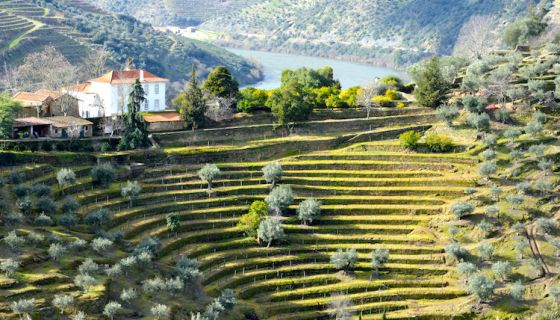From HK$500, $66.99, £54, €79, SG$150.71, CA$149.99, 1,075 Norwegian kroner, NZ$184.95, 16,522 Japanese yen, 995 Danish kroner, 658 Malaysian ringgit, 1,738 Chinese yuan, 19,395 roubles, 1,650 Brazilian reais
The best time for a sip of fine vintage port turns out to be just after 10 am on a Thursday morning in September. Not, perhaps, if you are the Master of Wine student who has to write about it in your examination, but certainly if you are the invigilator. It was glorious: full-throttle fruit that twists around the tongue, shag-pile texture and persistence that sweeps all before it.
The bottles that get poured in MW exams are chosen for very particular reasons, the chief one being typicality. Examiners are generally not trying to fool candidates, but to provide wines that are exemplary; true archetypes of their genre. In fact, the MW exam wine list is something of an insider's tip for anyone looking to buy best-in-class wines.
So it proves with Graham's 2000 port. There could not be a more timeless rendition. Perhaps its patient youthfulness is the only nit to pick, since it clearly has decades of ageability ahead. After all, the entire point of fortification is to preserve that primary fruit, with a shock of alcohol added to grapes that are still mid-ferment, having been vigorously macerated by thousands of stamping feet.
Although in fact this wine is also notable for being the first vintage port to use lagares roboticos – mechanised feet – to do the crushing, as pictured below, courtesy of the Graham's blog. One benefit of this system is a reduced requirement for human labour, which is a particularly acute problem in the remote, rural Douro Valley (it's extraordinarily beautiful too, as the main picture of Graham's Quinta dos Malvedos illustrates).
Andrew May, brand manager at Symington Family Estates (to which Graham's belongs) notes that 'to empty a traditional lagar, is a matter of about 90 minutes of hard shovelling for three men. To empty a robotic lagar, wine, cap and all, is a matter of 15 or 20 minutes standing at a control panel and keeping an eye on the flow out of the trapdoor.'
Paul Symington adds that 'in the automated lagar, the average additional one hour that the skins and pips are in contact with the juice is of vital importance at a critical time of the fermentation when a lot of colours and flavours are being extracted. Bear in mind that port ferments for about 36 hours only, so one additional hour in this short period is important, especially at the latter stages of the fermentation.'
Perhaps this extra hour explains the cryogenically preserved quality of the fruit? Either way, that is no barrier to drinking this blissfully enjoyable port. I enjoyed several more glasses last weekend, since there are always standby bottles provided for MW exams, which must not go to waste.
This time, on a Singapore staycation at Raffles Hotel, I served it lightly cool, perhaps around 15 °C (59 °F), which is far more complimentary to its sweet, high-alcohol structure than the conventional wisdom of room temperature, and much more enjoyable in tropical heat. So much so, in fact, that it made the perfect contemplative aperitif at around five o'clock on a balmy evening.
So it turns out that the best time for a sip of Grahams 2000 port is pretty much anytime.
The technically minded can read the specification sheet here, which includes details on the vintage conditions, as well as the sage advice to enjoy the port 'on its own, providing a memorable moment in the company of good friends'. The wine is widely distributed, so your friends are fairly sure to be near a bottle, and you can read six enthusiastic tasting notes in our own database if you need more persuasion.
See this recent collection of tasting notes on younger vintage port.














